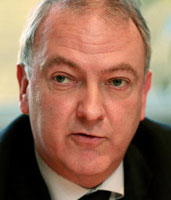
The Keogh Mortality Review of hospitals with excess mortality rates, including those in Bucks, was published today:
- Buckinghamshire Healthcare NHS Trust – Key Lines Of Enquiry (KLOE)
- Review into the quality of care and treatment provided by 14 hospital trusts in England: overview report
- Rapid Responsive Review Report For Risk Summit – Buckinghamshire Healthcare NHS Trust
- Key Findings and Action Plan following Risk Summit – Buckinghamshire Healthcare NHS Trust
The following are some of the important findings for Bucks Healthcare NHS Trust but, at last, I feel I may not be banging my head against the wall indefinitely. The Trust has been placed in special measures and they will have to carry through a concrete plan of change.
There are six broad areas for improvement:
- Governance, including risk management and reporting
- Urgent care pathways
- Patient safety
- Organisation-wide monitoring of clinical and operational effectiveness.
- Patient and public engagement, including communication and complaints
- Workforce issues, including recruitment, training and leadership
It’s a list which corresponds closely to the experiences which local people have reported to me.
The Panel found the following most important areas for improvement: a lack of clear treatment paths for acutely ill and deteriorating patients, especially those with pneumonia and kidney problems; patient transfer between hospital sites isn’t good enough; and community nurses have problems with out of hours clinical advice, with staff using NHS 111.
The Trust must move its focus on mortality away from trying to justify the figures and instead concentrate on trends and the development of relevant plans: the Trust Board must now develop a strategy to reduce the causes of high mortality. Having spoken with the Chief Executive in a conference call this afternoon, I know the Trust is recruiting a new Medical Director whose principal responsibility will be in this area.
In relation to the Better Healthcare in Bucks changes, the report finds,
The Trust needs a more robust method to provide assurance on the impact of major service changes on quality of care, especially in regard to the consolidation of A&E at the Stoke Mandeville site.
Risks associated with the new urgent care system were missing from the corporate risk register, including clinical effectiveness and operational performance. There’s to be an immediate and comprehensive audit of the entire Trust’s approach to risk assurance and patient safety, and no wonder: where mortality rates were identified as a risk, the trigger for raising the issue to the Board was worry about “reputational risk”.
The quality of nursing was too variable. Within 24 hours of arrival, the Panel was provided with evidence of two occasions when immobile, elderly patients needing assistance to go to the toilet had been ignored. Once was a nurse’s deliberate conduct; the other could only be explained by staff desensitisation to alarms. Some procedures were overly bureaucratic and insensitive to the needs of patients. The Health Secretary particularly mentioned treatment of patients with dementia.
The Board will be undergoing a rapid development programme covering quality governance, risk, assurance (rather than reassurance) and best practice. They must also improve their ability to scrutinize and challenge managers effectively. The Board has been told to adopt national initiatives to develop a “mature safety culture”. There is currently no systematic approach to gathering and reviewing patients’ views about their experience. That too must change.
In his remarks to the meeting of MPs which I chaired this afternoon, Sir Bruce commented that the people who had brought the greatest insights to his investigation were the public. There was also a comment from one of the lead investigators that the complaints system gave hospitals an opportunity to make things better. Currently, the report found complaints are not addressed in a timely manner.
Funding was not found to be correlated to high mortality but, as I read the Review, I saw some expensive items. Bucks remains underfunded and that is something I will pursue with the Secretary of State.
As many of us knew already, the Trust needs a good shake up from the top down. They now have a long to-do list defined by the Key Findings and Action Plan and they are in special measures to achieve it.
The Health Secretary defined special measures today as:
- Each hospital will be required to implement the recommendations of the Keogh review, with external teams sent in to help them do this. Their progress will be tracked and made public;
- The TDA or Monitor will assess the quality of leadership at each hospital, requiring the removal of any senior managers unable to lead the improvements required; and
- Each hospital will be partnered with high-performing NHS organisations to provide mentorship and guidance in improving the quality and safety of care.
Today is a vindication for all those of us who insisted serious changes were necessary. Sir Bruce and his team have brought forward a courageous and much-needed report which must now mark a turning point in the life of our local hospitals and the NHS.
I expect it to do so and I expect both the County Health and Adult Social Care Select Committee and the Health and Wellbeing Board to play a proper part.